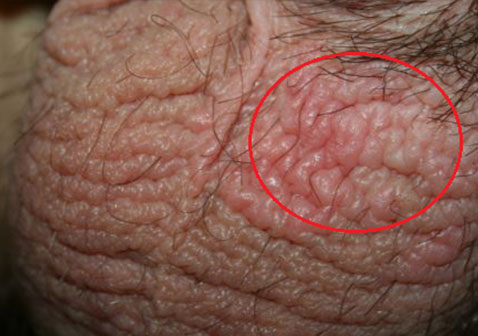Background
Scrotal eczema—a form of dermatitis affecting the skin of the scrotum—is more common than often acknowledged, yet remains a sensitive and under-discussed topic. Men of all ages can be affected, experiencing symptoms like intense itching, redness, dryness, and sometimes even cracking or oozing of the delicate skin in the groin area. The discomfort can significantly impact daily activities, sleep, and quality of life, but many sufferers are embarrassed to seek help.
Scientific and Clinical Evidence: What the Data Tell Us
Scrotal eczema is a subtype of atopic dermatitis or contact dermatitis localized to the scrotum. The scrotal skin is thin, highly sensitive, and exposed to unique environmental factors—heat, moisture, friction, and irritants from clothing or personal care products.
Epidemiological studies suggest that eczema can affect up to 15-20% of the general population, with scrotal involvement being less frequently reported due to social stigma. Clinical research shows that triggers often include prolonged sweating, use of harsh soaps, scented hygiene products, tight clothing, and sometimes allergic reactions to materials such as latex or certain laundry detergents.
Histologically, the affected skin reveals inflammation and a disrupted skin barrier. This makes the scrotum especially vulnerable to secondary infections by bacteria or fungi, further complicating the clinical picture.
Misconceptions and Harmful Behaviors
A number of misconceptions surround scrotal eczema. Some men mistakenly believe it is a sexually transmitted infection (STI) or a sign of poor hygiene, leading to shame or over-washing the area. Overzealous cleaning, use of alcohol-based wipes, or harsh soaps can strip the skin of its natural protective oils, worsening irritation.
Another common mistake is self-medicating with over-the-counter antifungals or steroids without a proper diagnosis. While these medications can sometimes help, inappropriate use can lead to skin thinning, worsening of eczema, or masking of underlying infections.
Correct Health Practices and Practical Recommendations
The good news is that scrotal eczema is highly manageable. Here are evidence-based steps for care:
1. **Gentle Cleansing**: Use lukewarm water and mild, fragrance-free soap. Pat dry with a soft towel; avoid rubbing.
2. **Moisturize**: Apply a hypoallergenic, fragrance-free moisturizer to the area daily, especially after bathing. Products containing ceramides can help restore the skin barrier.
3. **Avoid Irritants**: Wear loose, breathable cotton underwear. Wash clothing with fragrance-free detergents and rinse thoroughly.
4. **Identify Triggers**: Track any personal care products, fabrics, or activities that seem to worsen symptoms, and try to avoid them.
5. **Medication**: For moderate to severe cases, topical corticosteroids (low- to medium-potency) prescribed by a physician can reduce inflammation. In cases of secondary infection, antimicrobial creams may be necessary. Always consult a healthcare provider before starting these medications.
6. **Break the Itch-Scratch Cycle**: Try not to scratch. Short nails, wearing gloves at night, and using soothing cold compresses may help.
Case Vignette: Mr. Zhang’s Journey
Mr. Zhang, a 34-year-old office worker, began experiencing severe itching and redness in his scrotal area after switching to a new brand of sports underwear. Embarrassed, he tried various antifungal powders and washed the area several times a day, but the symptoms worsened.
After finally seeing a dermatologist, he learned that his condition was scrotal eczema, likely triggered by synthetic fabric and excessive washing. With a regimen of gentle cleansing, a prescribed mild steroid cream, and switching to cotton underwear, his symptoms improved dramatically within three weeks.
Expert Insights and Commentary
According to Dr. Li Ming, a dermatologist at a major teaching hospital, “Scrotal eczema is often overlooked because of its sensitive location. The key is to recognize it early and treat the underlying inflammation without causing further irritation.”
Dr. Li emphasizes the importance of patient education: “Many cases can be managed without prescription medications if patients adopt gentle skin care habits and avoid known irritants. But persistent or recurrent symptoms warrant professional evaluation—sometimes, what looks like eczema could be a fungal infection or another skin disease.”
Conclusion
Scrotal eczema may be a source of significant discomfort and embarrassment, but it is both common and treatable. Gentle skin care, avoidance of triggers, and appropriate medical management can lead to excellent outcomes. If symptoms persist or worsen, prompt consultation with a healthcare provider is crucial—not only for relief, but to rule out other conditions.
References
1. Lio PA, Lee M. “Scrotal Dermatitis: Diagnosis and Management.” Journal of Clinical Dermatology, 2019.
2. National Eczema Association. “Eczema Types: Atopic Dermatitis and Contact Dermatitis.”
3. British Association of Dermatologists. “Patient Information Leaflet: Genital Eczema.”
4. Smith KJ et al. “Differential Diagnosis of Scrotal Dermatoses.” Dermatology Clinics, 2021.


